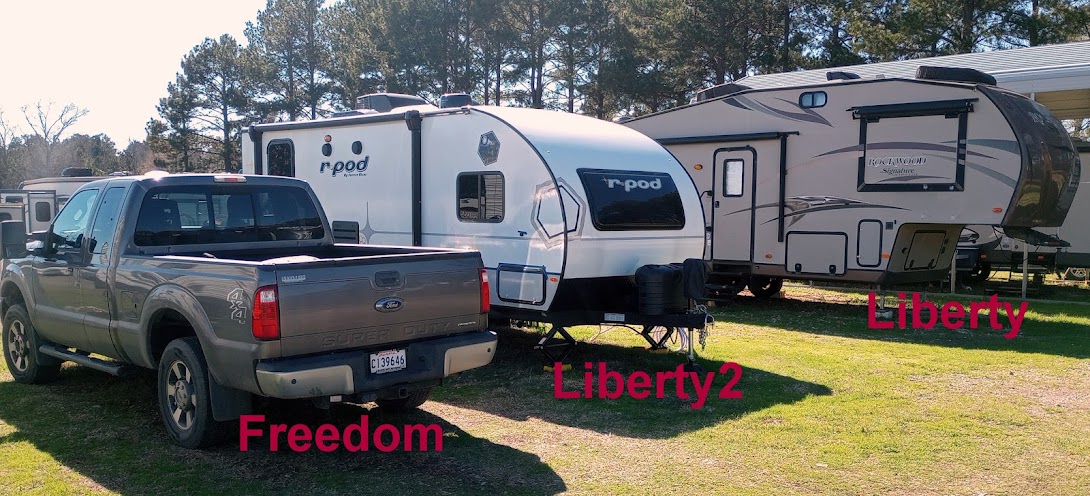All pictures taken with Nokia Lumia Icon 929 cell phone
(click pictures to enlarge)
This is a nicely laid out state park with plenty of room between campsites and paved roads/parking areas. Westwego is a city that was started in 1870 when the Texas and Pacific Railroad built a rail yard just north of canal that connected the Mississippi River to the Gulf of Mexico by way of Bayou Segnette and Bayou Lafource. Legend has it that the city got its name from a train conductor that used to say "West We Go" as the train would head out to the west. Eventually the words became combined and pronounced "Wes-way-go". It is within 30 to 45 minutes of downtown New Orleans by way of the Algiers/Canal Street Ferry. Country-like camping but near big-city things. Nice.
 |
| Campsite at Bayou Segnette SP |
My plan was to be here 5 days but have since extended that by 3 more days. The campsites are only water/electricity so I will have to monitor my waste tanks since 8 days is about the limit of my tanks. I have 3 waste tanks on Liberty, (grey, black and galley). Each are 38 gallons but the grey tank is the controlling tank. It is for the shower and bathroom sink. I am used to taking Navy showers in about 3 1/2 gallons of water without really trying or 4 gallons if I get really crazy. That uses up about 30 gallons of the grey tank leaving 8 gallons for the sink and extra.
I went into New Orleans to see a few things. I don't like spending a lot of time in big cities, but there are things worth seeing. I didn't want to drive Freedom
 |
| Entering New Orleans and Algiers |
into the city due to its size and the narrowness of some of the streets. To avoid that, I used the Ferry. It connects the west bank of the Mississippi River at Algiers to New Orleans at the end of Canal Street. You can park
 |
| Living under the Crescent City Connection Bridges |
along the street in Algiers but I decided on using the parking lot at $5.00 for the day. The Ferry cost $2.00 each way, so for $9.00 I was able to get to the end of Canal Street.
 |
| New Orleans City-scape from the middle of the river |
The ferry is privately owed as of a couple years ago. Prior to that is was operated by the Louisiana Department of Transportation and Development and paid for from tolls collected on the massive Crescent City Connection Bridges. The tolls ended in 2012 after the bonds were paid off that financed the
 |
| The Crescent City Connection Bridges in the distance |
building of the
second bridge back in 1989. The tolls were very cheap. If you used the electronic option, the toll was 20 cents for a car and 50 cents for an 18-wheeler. Those tolls were used to not only pay off the cost of the bridge but also for its maintenance. On bridges that size which are carrying over 180,000 vehicles per day, maintenance is a daily necessity.
 |
| Two old-style stern-wheeler riverboats |
The tolls also built and maintained about 13 miles of a multi-lane expressway along the west side of the river leading to the bridges. By the way, the bridge and expressway used to have their own police force to take care of any problems. There was a big fight about whether to remove the tolls or keep them in place after the bonds were paid off. A vote of the people decided the issue and the tolls were removed. It was a bad mistake and will prove to be very much "badder" as time goes on. The funds to maintain the expressway and bridges will now have to compete with every other road and bridge in the state instead of having their own source of monies. I won't go into how the Louisiana Transportation Trust fund is so poorly funded, but just know, trouble is coming.
Once you get off the ferry, you are within easy walking distance to catch the streetcars. You can ride the streetcars all day by using a $3.00 pass. It is well worth it. There are 4 streetcar routes. Two are on Canal Street, one is on St. Charles and the fourth is along the river. I rode all of them and think it is a very nice and lazy way to see a large chunk of the city.
The St. Charles line is the oldest continuously operated streetcar line in the world. It goes through Loyola University, through a residential neighborhood and around Lee Circle. It connects with Canal Street which makes it easy to transfer to another streetcar line.
 |
| Looking up Canal Street. |
 |
| Inside a streetcar |
 |
| Looking up St. Charles Avenue with its Oak Trees |
 |
| I couldn't pass up this office combination. Law Offices and Tattoo Parlor. |
Ya'll take care of each other. I'll Cya down the road.


Thank you for this posting. Can you take a dog on the streetcars?
ReplyDeleteHello Gene,
ReplyDeleteI didn't see any dogs on the streetcars or ferry. There were a couple on the river walk though. If you have to leave them in your RV, you can see a lot of New Orleans in just a few hours.